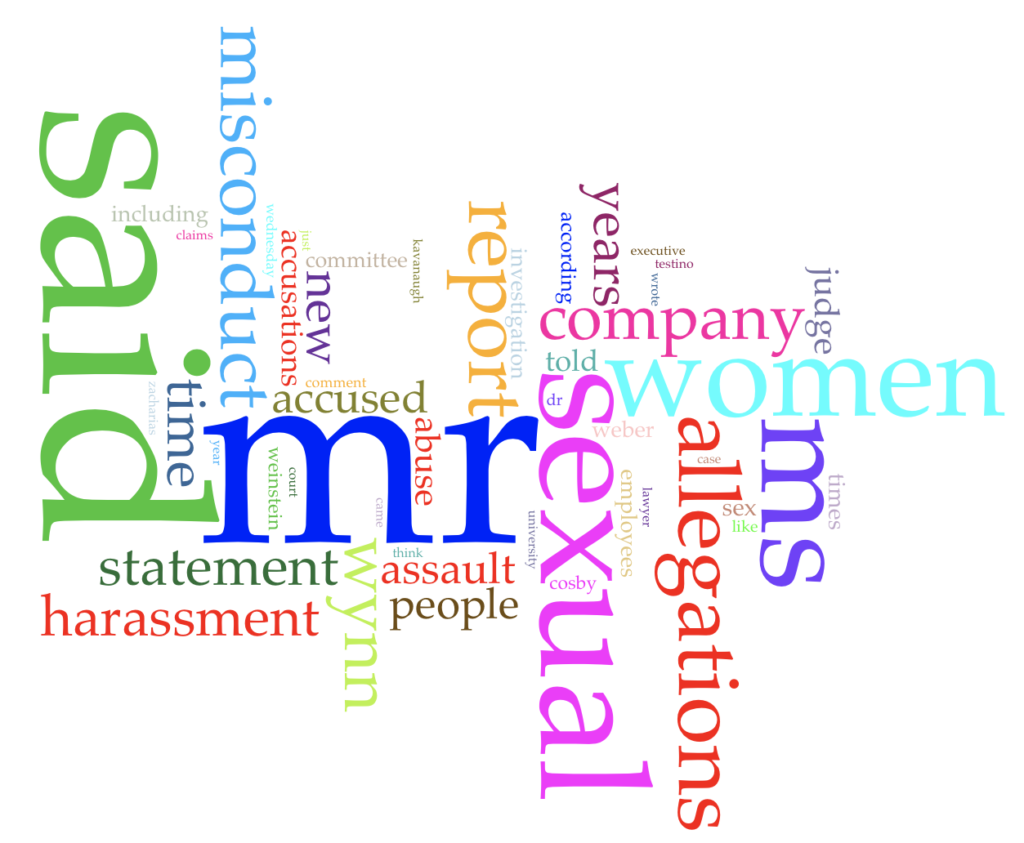Language Before #MeToo (2012-2016)

A quick recap of the top 10 words used in sexual misconduct reporting before the #MeToo Movement:
- Said: used 346 times
- Sexual: used 227 times
- Mr: used 147 times
- Ms: used 118 times
- Assault: used 111 times
- Students: used 108 times
- University: used 105 times
- Women: used 72 times
- Year: used 66 times
- Campus: used 60 times
Language After #MeToo (2018-2022)

A quick recap of the top 10 words used in sexual misconduct reporting after the #MeToo Movement:
- Mr: used 390 times
- Said: used 365 times
- Sexual: used 167 times
- Ms: used 114 times
- Women: used 103 times
- Allegations: used 85 times
- Report: used 80 times
- Misconduct: used 68 times
- Wynn: used 59 times
- Company: used 58 times
Notable Changes in Language
The use of some words declined following the #MeToo Movement. These include “sexual,” “assault,” “Cosby,” “university,” and “victim.” Other words were used more frequently following the Movement. These words include “allegation,” “misconduct,” “harassment,” “abuse,” “accusation,” and “survivor.” This analysis reveals a shift in language regarding sexual misconduct. The rise of the words “allegation” and “accusation” suggest that more survivors of sexual violence are coming forward to discuss their experiences, which may be a result of the #MeToo Movement. It also seems that the New York Times widened the scope of their language and reporting on specific acts of sexual violence following the Movement. While “assault” was the most used word before #MeToo, a greater breadth of language such as “misconduct,” “harassment,” and “abuse” have been used following #MeToo. Another potential product of the Movement is the shift in language from “victim” pre-#MeToo to “survivor” post-#MeToo.
Click for Next: “From Victim to Survivor”